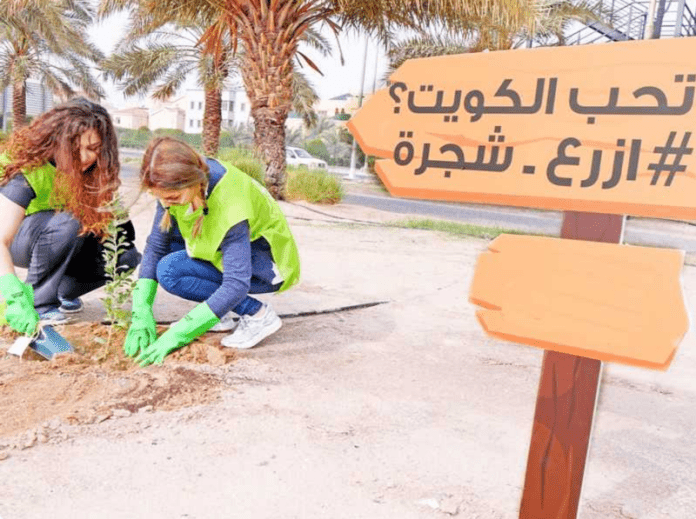Many observers feel the government has not done enough to protect the citizens and residents from high temperatures and dust storms especially during the peak summer months of June, July and August by landscaping cities and governorates of Kuwait.
Observers say the government efforts in this regard over the past years have been lax in spite of the fact that Kuwait is considered one of the hottest countries in the world, and one of the most affected by climate change, reports a local Arabic daily.
Kuwait is ranked as the Arab capital most vulnerable to heat, with an average temperature of 45 degrees Celsius during the three summer months and a maximum of 51 degrees, followed by Baghdad (44 and 50), Riyadh (43 and 49), Abu Dhabi (42 and 47), and Doha (41 and 47). This is in a recent analytical report by the Arab Gulf Center for Research and Studies, titled ‘The Longest and Hottest Arab Summer in Decades: High Risks of Drought and Fires’.
Khartoum ranked sixth with an average temperature of 41 degrees and 44 degrees as a maximum, then Manama (38 and 45), followed by Muscat (37 and 46), Damascus (36 and 44), and Cairo (36 and 43); Nouakchott ranked eleventh, with an average temperature of 36 degrees and a maximum of 40, Tripoli (35 and 45), Mogadishu (34 and 36), Tunisia (33 and 44), and Amman (32 and 39); and in the sixteenth place, Sanaa was ranked with an average temperature of 31 degrees and a maximum of 36, followed by Ramallah (30 and 31), Algeria (29 and 40), Beirut (28 and 34), Rabat (28 and 31) and Moroni, the capital of Comoros, in the last place with an average temperature. At 28 degrees and 30 maximum.
Studies indicate that the threat of global warming and declining air quality and other indicators call for urgent actions to adapt to future environmental risks.
In light of the expectations of future dust waves this summer, the process of afforestation and greening is still progressing slowly, compared to the earlier demands of citizens and observers, who stress the need to increase the area of vegetation cover and combat desertification, while relying on windbreaks on highways, especially in the northern and southern regions.
We all remember what the Public Authority for Agriculture did, years ago, ny planting “sidr” trees to establish a plant barrier consisting of a row or several trees, to reduce the effect of wind on plants and various crops, protect the soil from erosion, reduce evaporation and conserve water, considering that sidr trees are suitable for the local environment, and occupy the second place in terms of economic value after palm trees.
The observers have stressed the need to choose perennial trees that can withstand local environmental conditions, resist pest infestation, and be fast-growing and dense, noting that plant seedlings must be of appropriate size and age when planting to ensure their success, and their condition should be good in terms of vegetative and root growth and is free from damage, with its ability to reproduce and abundant production of seeds, for future use.
6 benefits of landscaping include
1 – Helping improve the climate
2 – Reducing the temperature in summer
3 – Noise reduction
4 – Protect the soil from erosion
5 – Reduce the glare of the sun’s rays
6 – Fortifying cities from the dangers of wind
3 ways to stop the dust expansion
1 – Increasing the area of vegetation cover
2 – Combating desertification
3 – Erecting windbreaks on highways
Some attribute the delay in afforestation to:
• Lack of budgets
• Lack of supervision over the implementation
• Failure to follow up on maintenance work
• Ignoring the completion of irrigation operations

















